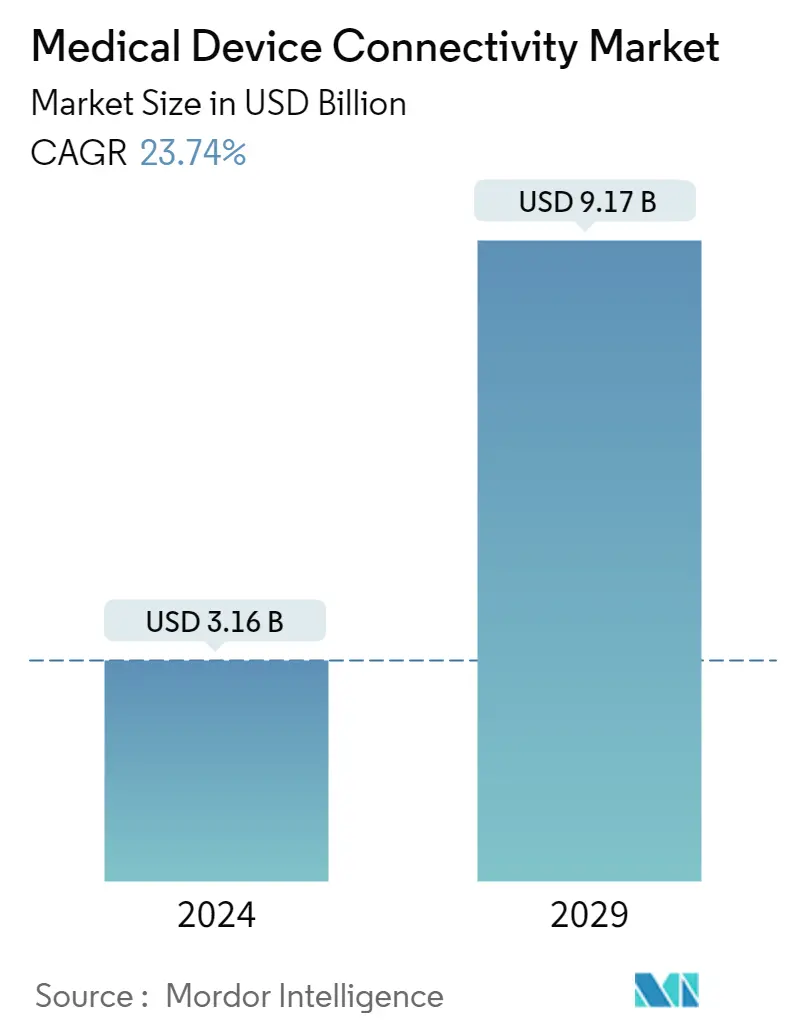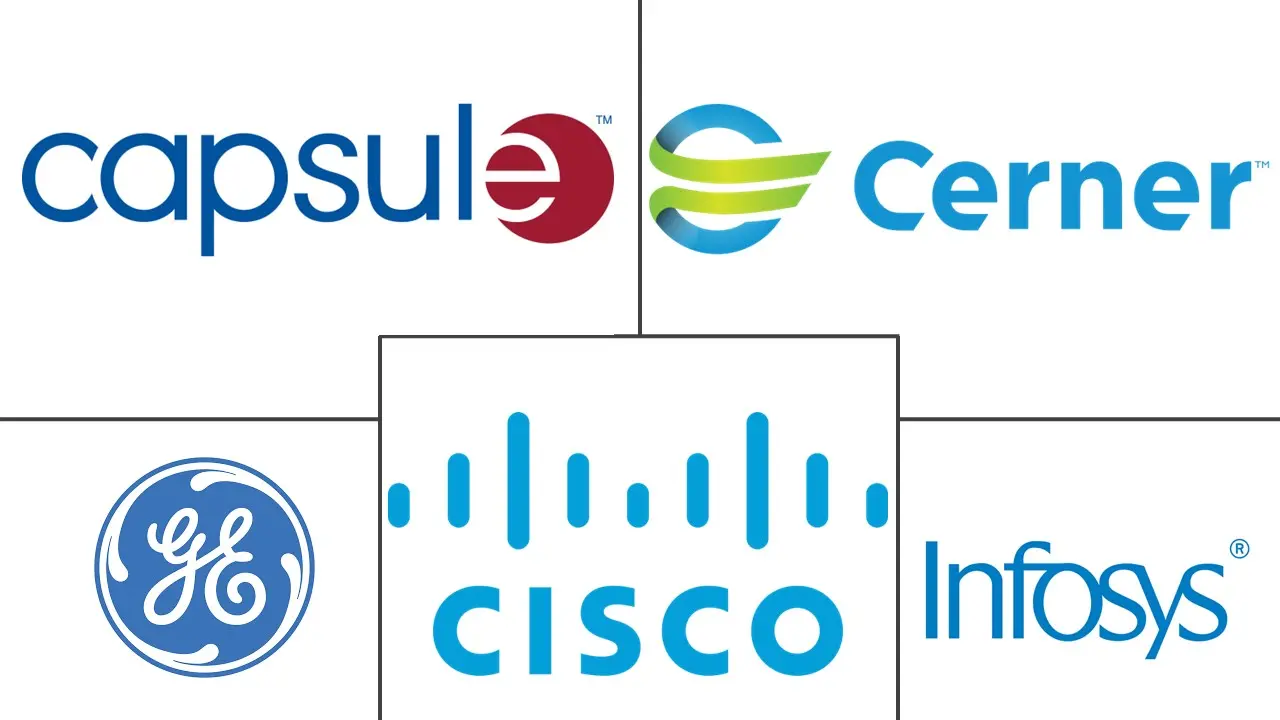Market Size of Medical Device Connectivity Industry

| Study Period | 2019 - 2029 |
| Market Size (2024) | USD 3.16 Billion |
| Market Size (2029) | USD 9.17 Billion |
| CAGR (2024 - 2029) | 23.74 % |
| Fastest Growing Market | Europe |
| Largest Market | North America |
Major Players
*Disclaimer: Major Players sorted in no particular order |
Need a report that reflects how COVID-19 has impacted this market and its growth?
Medical Device Connectivity Market Analysis
The Medical Device Connectivity Market size is estimated at USD 3.16 billion in 2024, and is expected to reach USD 9.17 billion by 2029, growing at a CAGR of 23.74% during the forecast period (2024-2029).
Medical device connectivity is one of the industries that had a positive impact due to the COVID-19 pandemic owing to the extensive patient pool getting admitted to the hospital due to the infection. For instance, according to an article published by De Gruyter, in August 2021, Advances in the internet of medical things (IoMT) technology allow to connect of all medical tools, medical databases, and devices via the internet in one collaborative network, which conveys real-time data integration and analysis. IoMT framework-driven COVID-19 self-assessment tool captured signs and symptoms through multiple probing questions, storing the data in the COVID-19 patient database, then analyzing the data to determine whether a person needs to be tested for COVID-19 or other actions may require to be taken. Medical device connectivity system has demonstrated the ability to enhance health outcomes and reduce chaos during the pandemic, which made hospitals realize the advantage of medical device connectivity system over manual systems. Hence, the demand for medical device connectivity system systems increased, eventually driving the market growth.
The major factors for the growth of the market include the rising implementation of electronic health records and health information exchange systems, an increase in the demand for telehealth and telemedicine technologies, and technological advancements in wireless technologies and Bluetooth-enabled medical devices. For instance, according to an article published by Cox Communications, Inc., in May 2022, Bluetooth Low Energy (BLE) was developed and used Bluetooth technology to track. BLE makes use of software and gateways via cell phones and other devices. It enables low-power wireless technology, extending battery life while allowing devices to communicate with one another. The vast majority of smartphones and tablets are BLE compatible, making them perfect for closer contact. Furthermore, in September 2021, the Faculty of Sexual and Reproductive Healthcare (FSRH) and the Royal College of Obstetricians and Gynecologists (RCOG) joined forces to launch a new campaign to disseminate information about telemedicine for early medical abortion (EMA). Thus, the increasing adoption rate of telemedicine services is directly affecting the growth of the medical device connectivity market.
The companies are actively involved in new product launch developments and collaborations to expand their footprint. For instance, in October 2021, Royal Philips launched device drivers that enable integration and interoperability, Philips Capsule Medical Device Information Platform (MDIP). Philips Capsule MDIP integrated into the Philips HealthSuite Platform, installed in more than 3,000 healthcare facilities globally. Philips Capsule MDIP captures streaming clinical data and transforms it into actionable insights for patient care management, aiming to improve collaboration between care teams, streamline clinical workflows, and increase productivity. Such development is expected to drive the growth of the market over the forecast period.
Therefore, the factors mentioned above are attributed collectively to the studied market growth over the forecast period. However high cost of deployment and complete installation limiting the adoption of advanced solutions are expected to hinder market growth over the forecast period.
